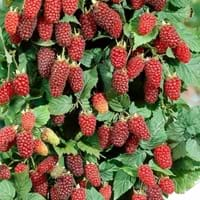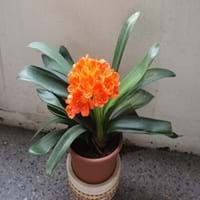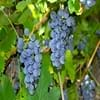Life Span
Perennial
Perennial
Type
Fruit
Bulb or Corm or Tuber
Origin
Hybrid origin
South Africa
Types
loganberry is a hybrid
Not Available
Number of Varieties
Not Available
Habitat
gardens
Temperate Regions, Woodlands
USDA Hardiness Zone
7-9
9-11
Sunset Zone
2a, 2b, 3a, 3b, 4, 5, 6, 7, 8, 9, 10, 11, 12, 13, 14, 15, 16, 17, 18, 19, 20, 21, 22, 23, 24
21,22
Habit
Prostrate/Trailing
Clump-Forming
Flower Color
White
Yellow, Red, Orange
Flower Color Modifier
Bicolor
Bicolor
Leaf Color in Spring
Green
Dark Green
Leaf Color in Summer
Green
Light Green
Leaf Color in Fall
Green
Several shades of Green
Leaf Color in Winter
Light Green
Light Green
Leaf Shape
Heart-shaped
Long Linear
Plant Season
Spring, Summer
Spring, Winter
Sunlight
Full Sun, Partial Sun
Partial shade, Full Shade
Growth Rate
Very Fast
Slow
Type of Soil
Loam, Sand
Loam, Sand
The pH of Soil
Acidic, Neutral
Acidic, Neutral
Soil Drainage
Well drained
Well drained
Bloom Time
Early Spring
Early Spring, Spring, Late Spring, Winter, Late Winter
Tolerances
Drought
Drought
Where to Plant?
Container, Ground
Container, Ground
How to Plant?
Seedlings
Seedlings, Transplanting
Plant Maintenance
Medium
Medium
Watering Requirements
Needs watering once a week
Water more in summer
In Summer
Ample Water
Lots of watering
In Spring
Twice a week
Moderate
In Winter
Once a week
Average Water
Soil pH
Acidic, Neutral
Acidic, Neutral
Soil Type
Loam, Sand
Loam, Sand
Soil Drainage Capacity
Well drained
Well drained
Sun Exposure
Full Sun, Partial Sun
Partial shade, Full Shade
Pruning
No pruning needed in the early stages, Prune every year
Remove damaged leaves, Remove dead branches, Remove dead leaves
Fertilizers
Compost, fertilize in spring, Mulch, organic fertlizers
fertilize in growing season
Pests and Diseases
Aphids, Cane Spot, Gray mold, Spur Blight
Red blotch
Plant Tolerance
Drought
Drought
Flowers
Insignificant
Showy
Flower Petal Number
Single
Single
Foliage Texture
Medium
Coarse
Foliage Sheen
Matte
Glossy
Attracts
Birds, Butterflies
Insects
Allergy
Diarrhea, Itchiness, Swelling, Vomiting
Asthma, breathing problems, Itchiness
Aesthetic Uses
Not Used For Aesthetic Purpose
Beautification, Landscape Designing, Showy Purposes, Used for decorating walls, fences, gates, hedges, etc.
Beauty Benefits
Not Available
Not Available
Environmental Uses
Nesting sites for birds
Air purification, Food for insects, Prevent Soil Erosion
Medicinal Uses
antimicrobial, Antioxidants, Folate, Low calories, Low carbohydrates, Low Fats, Manganese, Vitamin C, Vitamin K
No Medicinal Use
Part of Plant Used
Fruits
Flowers
Other Uses
Used As Food, Used for its medicinal properties
Decoration Purposes, Showy Purposes, Used as Ornamental plant
Used As Indoor Plant
No
Yes
Used As Outdoor Plant
Yes
Yes
Garden Design
Edible, Fruit / Fruit Tree
Container, Feature Plant, Foundation, Houseplant, Mixed Border
Botanical Name
RUBUS x loganobaccus
CLIVIA miniata
Common Name
Loganberry
Clivia
In Hindi
Loganberry
Clivia
In German
Loganbeere
Clivia
In French
Loganberry
Clivia
In Spanish
Loganberry
Clivia
In Greek
Είδος μούρου
κλίβια
In Portuguese
framboesa silvestre
Clivia
In Polish
Loganberry
Clivia
In Latin
Loganberry
Clivia
Phylum
Magnoliophyta
Magnoliophyta
Class
Magnoliopsida
Liliopsida
Order
Rosales
Asparagales
Family
Rosaceae
Liliaceae
Clade
Angiosperms, Eudicots, Rosids
Angiosperms, Monocots
Tribe
Not Available
Not Available
Subfamily
Not Available
Amaryllidoideae
Number of Species
Not Available
Difference Between Loganberry and Clivia
If you are confused whether Loganberry or Clivia are same, here are some features about those plants to help you choose better. Many people think that these two plants have the same characteristics, but one can see Loganberry and Clivia Information and learn more about it. Fertilizers required for proper growth of Loganberry are Compost, fertilize in spring, Mulch and organic fertlizers, whereas for Clivia fertilizers required are fertilize in growing season. Hence, one should know the basic difference between Loganberry and Clivia if you are planning to have them in your garden to enhance its beauty.
<
Flowering PlantsImportance of Loganberry and Clivia
Want to have the most appropriate plant for your garden? You might want to know the importance of Loganberry and Clivia. Basically, these two plants vary in many aspects. Compare Loganberry and Clivia as they differ in many characteristics such as their life, care, benefits, facts, etc. Every gardener must at least have the slightest clue about the plants he wants to plant in his garden. Compare their benefits, which differ in many ways like facts and uses. The medicinal use of Loganberry is antimicrobial, Antioxidants, Folate, Low calories, Low carbohydrates, Low Fats, Manganese, Vitamin C and Vitamin K whereas of Clivia is No Medicinal Use. Loganberry has beauty benefits as follows: Not Available while Clivia has beauty benefits as follows: Not Available.
Compare Facts of Loganberry vs Clivia
How to choose the best garden plant for your garden depending upon its facts? Here garden plant comparison will help you to solve this query. Compare the facts of Loganberry vs Clivia and know which one to choose. As garden plants have benefits and other uses, allergy is also a major drawback of plants for some people. Allergic reactions of Loganberry are Diarrhea, Itchiness, Swelling and Vomiting whereas of Clivia have Asthma, breathing problems and Itchiness respectively. Having a fruit bearing plant in your garden can be a plus point of your garden. Loganberry has showy fruits and Clivia has no showy fruits. Also Loganberry is not flowering and Clivia is not flowering . You can compare Loganberry and Clivia facts and facts of other plants too.





